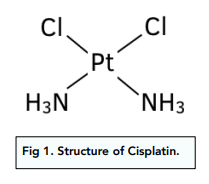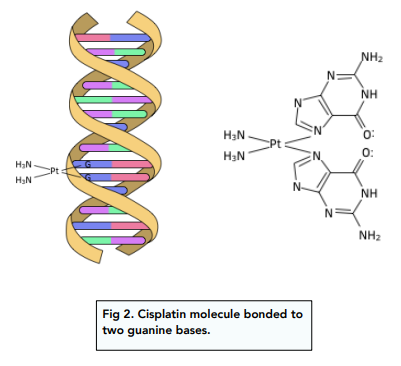Amino Acids, Proteins and DNA - DNA Replication (A-Level Chemistry)
DNA Replication
DNA Replication
DNA replication must occur in cells in order for organisms to grow and repair.
Exact replication must take place to ensure that the organism can still function correctly and contain the correct proteins. The process of DNA replication goes as follows:
1. Both polynucleotide strands separate. During DNA replication, the two polynucleotide strands that make up the DNA molecule separate so that the bases on each strand are exposed.
2. Free nucleotides pair up with their matching bases. A will pair up with T and C will pair up with G. These nucleotides are found floating freely within the cell.
3. Paired-up free nucleotides are linked together. Two new polynucleotide strands are formed which, paired up with the polynucleotide strands used as templates, form two exact copies of the original double helix DNA molecule.
Anti-Cancer Drugs
Cisplatin
Cisplatin is a square planar structured complex ion.
The structure of cisplatin is shown below:

Cisplatin consists of a central platinum ion with two chloride ligands and two ammonia ligands attached.
Lone pairs of electrons on the ligands form dative covalent bonds with the central platinum ion.
The Action of Cisplatin
Cisplatin is able to bond to one of the guanine bases on one of the polynucleotide chains. This prevents DNA replication.
It works in the following way:
1. First ligand substitution reaction. One of the chloride ligands on cisplatin is substituted for water molecules.
2. Second ligand substitution reaction. The newly-substituted water molecules is, in turn, replaced by one of the guanine nitrogen atoms. Dative covalent bonds are formed between the lone pair on one nitrogen atom on a guanine base and the central platinum ion at the centre of cisplatin.

3. The process is repeated for the other chloride ligand
4. DNA shape is distorted. This prevents DNA replication from taking place.
Side Effects of Cisplatin
Cisplatin is unable to differentiate between the DNA of cancerous cells and those of healthy cells.
Therefore the cisplatin drug attacks healthy cells causing side effects such as kidney and nerve damage, and hair loss.
Balancing the benefits and the adverse effects is an important part of using cisplatin to treat cancerous cells in patients.
Smaller quantities of the drug are given at regular intervals, to give the body time to recover.





Still got a question? Leave a comment
Leave a comment